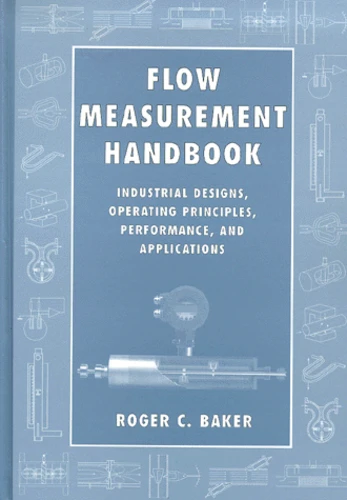Flow Measurement Handbook. Industrial Designs, Operating Principles, Performance, And Applications
Par :Formats :
- Paiement en ligne :
- Livraison à domicile ou en point Mondial Relay indisponible
- Retrait Click and Collect en magasin gratuit
- Nombre de pages524
- PrésentationRelié
- Poids1.12 kg
- Dimensions18,3 cm × 26,1 cm × 3,2 cm
- ISBN0-521-48010-8
- EAN9780521480109
- Date de parution01/07/2000
- ÉditeurCambridge University Press
Résumé
Flow Measurement Handbook is an information-packed reference for engineers on flow-measuring techniques and instruments. Striking a balance between laboratory ideal and the realities of field experience, it provides a wealth of practical advice on the design, operation, and performance of a broad range of flowmeters.
The book begins with a brief review of essentials of accuracy and flow, how to select a flowmeter, and various calibration methods. Following this, each chapter is devoted to a class of flowmeter and includes detailed information on design, application, installation, calibration, operation, advantages, and disadvantages.
Among the flowmeters discussed are orifice plates, venturi meters, standard nozzles, critical flow venturi nozzles, variable area and other devices depending on momentum of the flow, volumetric flowmeters such as positive displacement, turbine, vortex shedding, swirl, fluidic, electromagnetic and ultrasonic meters, and mass flowmeters including thermal and Coriolis. More than 80 different types and 250 applications are listed in the index. There are also chapters covering probes, a brief introduction to modern control, and manufacturing implications.
For those readers who want more background information, many chapters conclude with an appendix on the mathematical theory behind the techniques discussed. The final chapter takes a look at directions in which the technology is likely to go in the future.
Engineers will use this practical handbook to solve problems in flowmeter design and application and to improve performance.
Flow Measurement Handbook is an information-packed reference for engineers on flow-measuring techniques and instruments. Striking a balance between laboratory ideal and the realities of field experience, it provides a wealth of practical advice on the design, operation, and performance of a broad range of flowmeters.
The book begins with a brief review of essentials of accuracy and flow, how to select a flowmeter, and various calibration methods. Following this, each chapter is devoted to a class of flowmeter and includes detailed information on design, application, installation, calibration, operation, advantages, and disadvantages.
Among the flowmeters discussed are orifice plates, venturi meters, standard nozzles, critical flow venturi nozzles, variable area and other devices depending on momentum of the flow, volumetric flowmeters such as positive displacement, turbine, vortex shedding, swirl, fluidic, electromagnetic and ultrasonic meters, and mass flowmeters including thermal and Coriolis. More than 80 different types and 250 applications are listed in the index. There are also chapters covering probes, a brief introduction to modern control, and manufacturing implications.
For those readers who want more background information, many chapters conclude with an appendix on the mathematical theory behind the techniques discussed. The final chapter takes a look at directions in which the technology is likely to go in the future.
Engineers will use this practical handbook to solve problems in flowmeter design and application and to improve performance.

